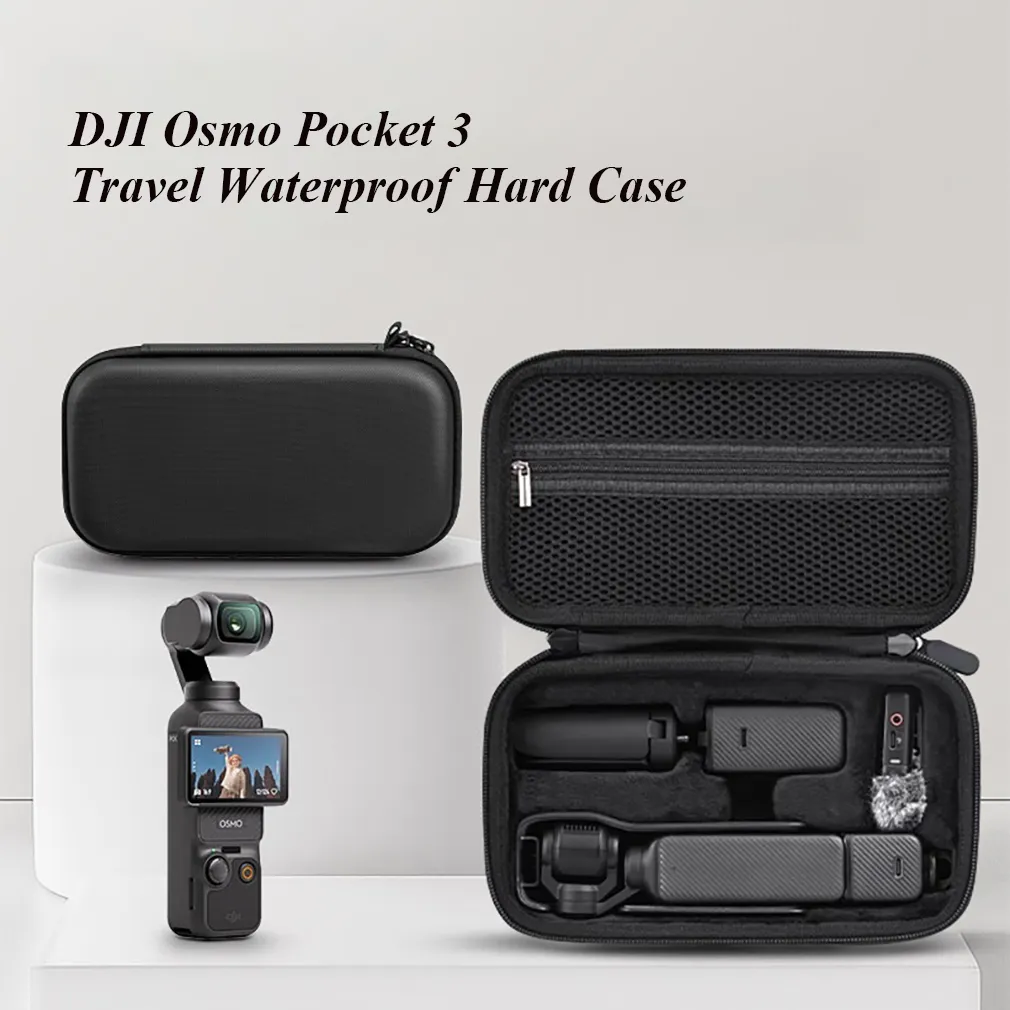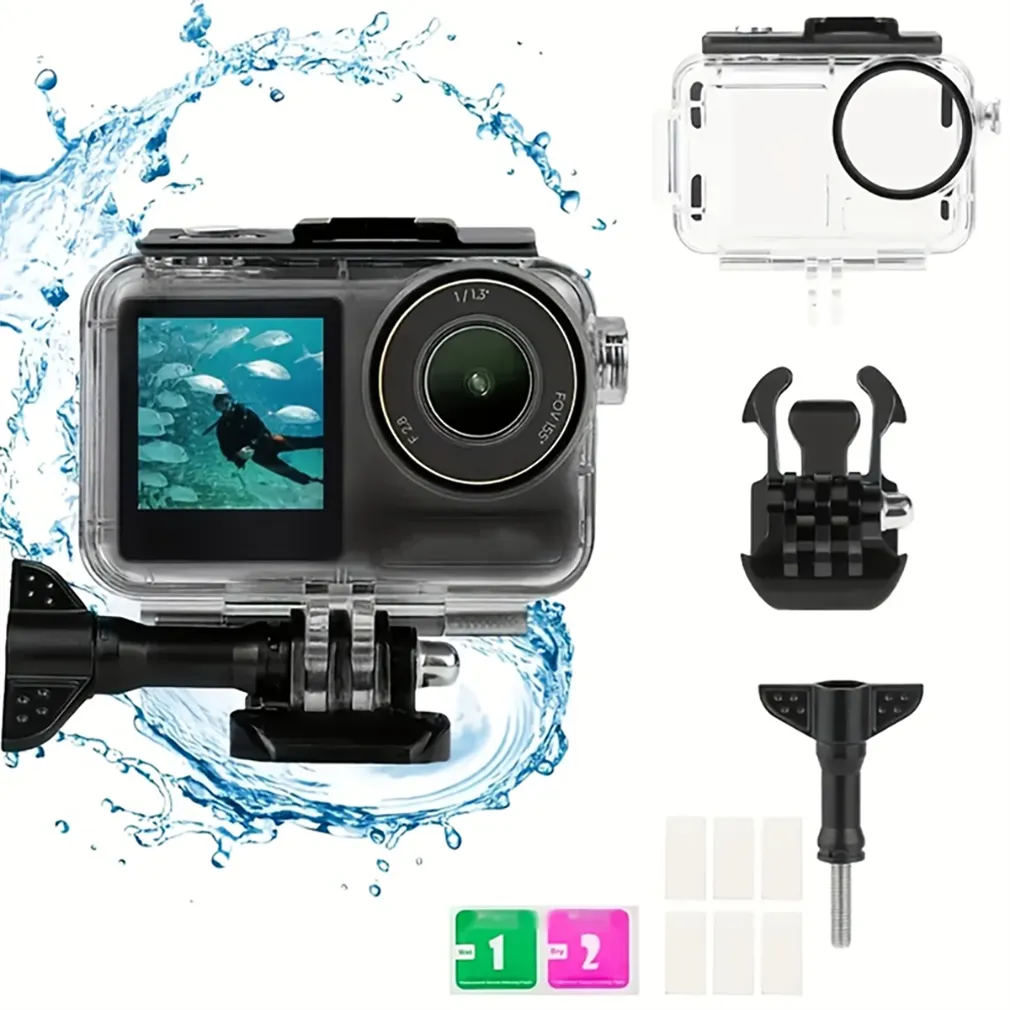contact Boss
Don’t rush to close it, talk to our boss directly, you will get a surprise.



1900+ Users
Completed User Services
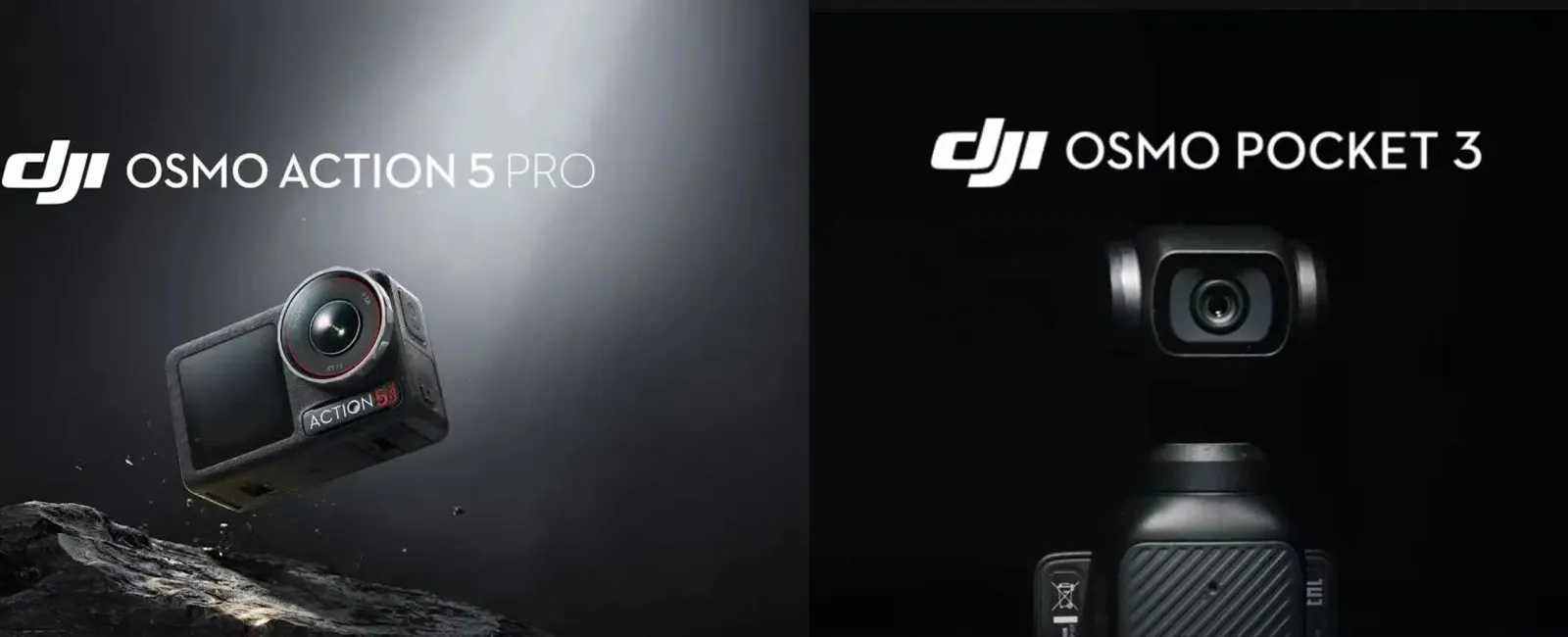
If you’re a blogger or a travel enthusiast, I’m sure you’re very familiar with these two products.
First, there’s the DJI Action 5 Pro, released in September 2024, and the DJI Osmo Pocket 3, released in October 2023. However, even today, after their releases, many people still aren’t sure how to choose between these two cameras.
If you’re unsure, this article will provide a detailed explanation. I believe that by the end, you’ll be able to make a clear decision.
PickOnes prioritizes the user experience over product specifications. Therefore, this article will focus on the user experience of the DJI Action 5 Pro vs. the DJI Osmo Pocket 3.
We will analyze the DJI Action 5 Pro and the DJI Osmo Pocket 3 from four perspectives.
The DJI Action 5 Pro weighs 0.325 lb. The DJI Osmo Pocket 3, due to its more complex gimbal structure, weighs around 0.4 lb.
Most smartphones on the market weigh around 0.5 lb. Both of these products are lighter than most phones and feel quite good in the hand.
The DJI Action 5 Pro can be thought of as a slightly larger charging dock for Bluetooth earbuds, easily fitting into even the smallest pockets or handbags.

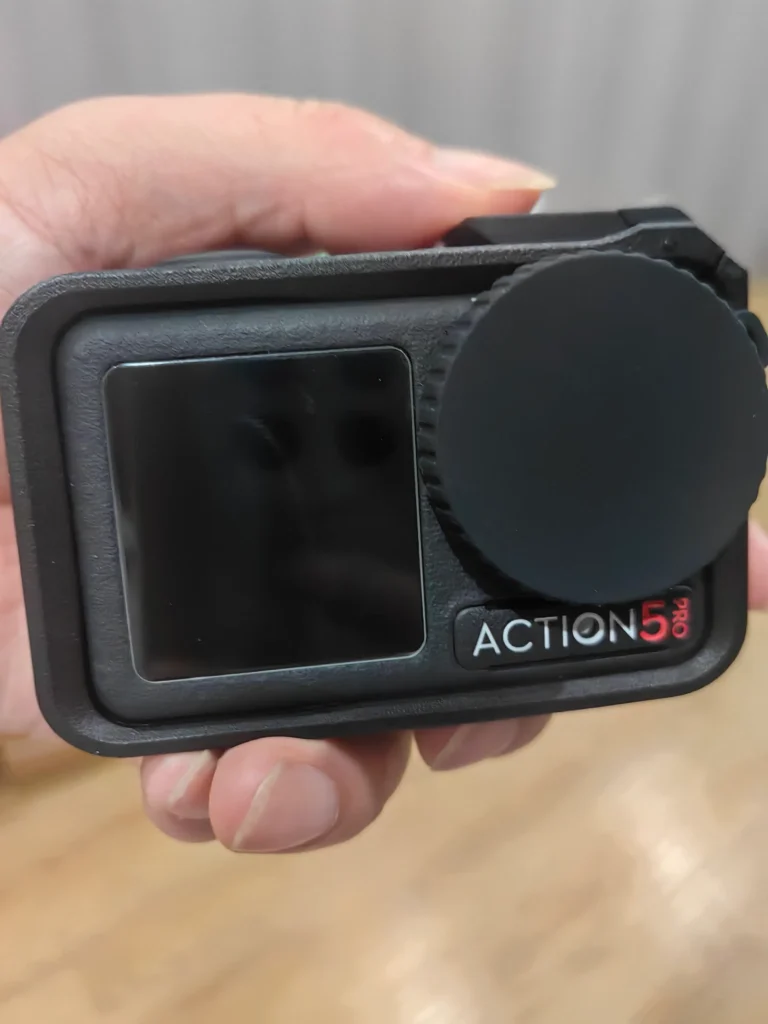
The DJI Osmo Pocket 3, on the other hand, is more like a badminton handle, with a relatively slender design.
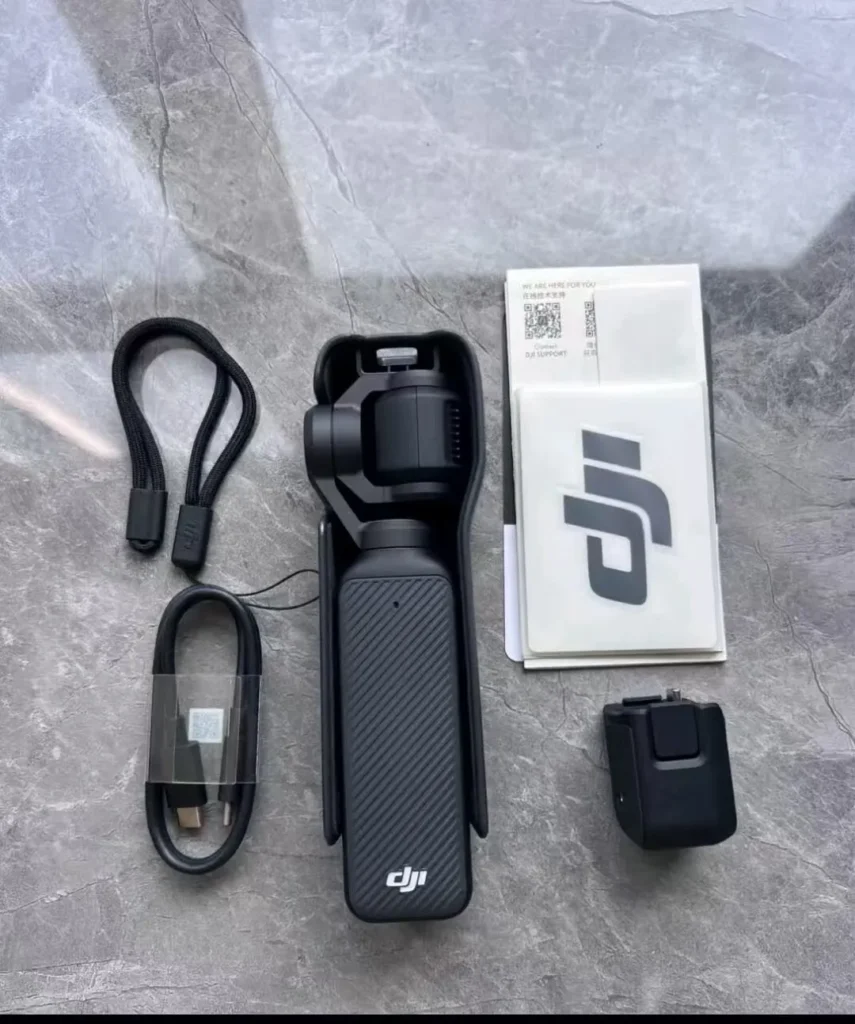
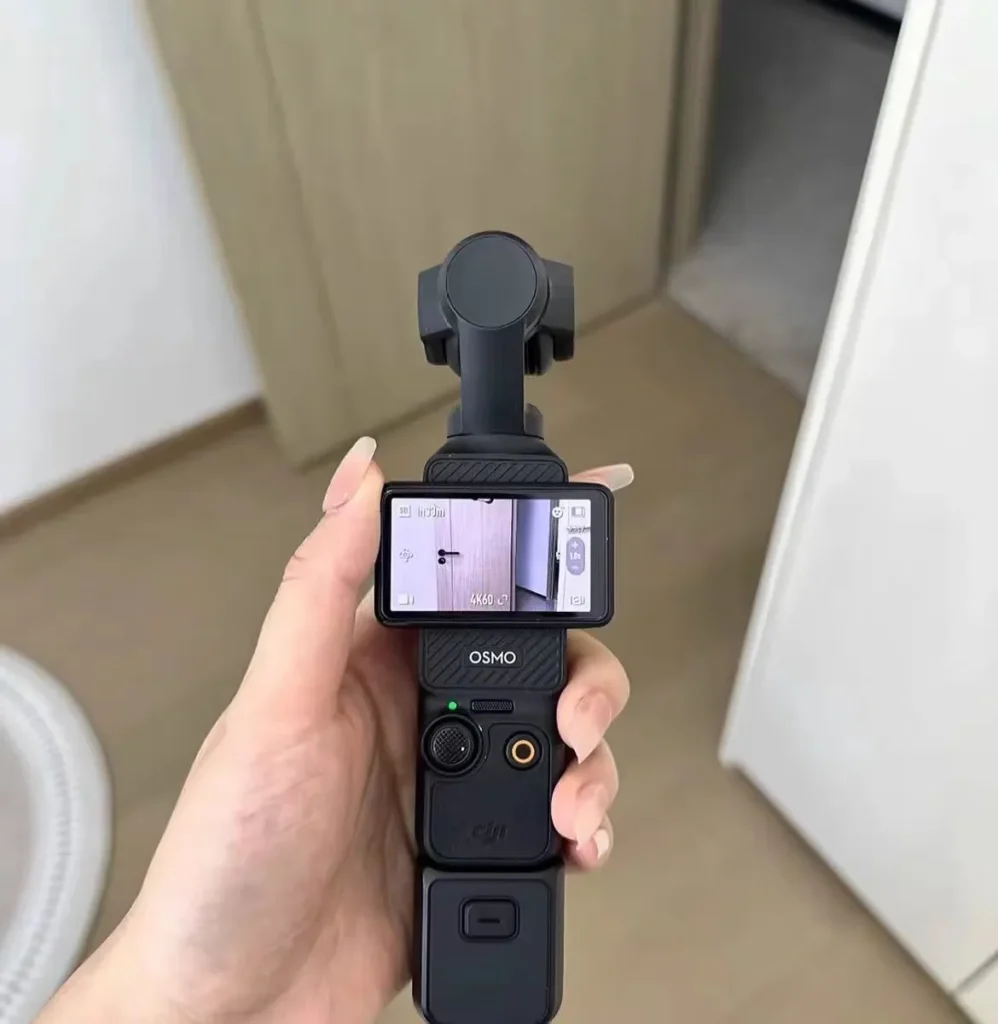
Both the DJI Action 5 Pro and the DJI Osmo Pocket 3 are palm-sized and fit effortlessly in pockets. They’re easy to grab and take photos while exploring stores or traveling, without the burden of bulky equipment. They’re perfect for someone like me who loves documenting life but doesn’t want to mess around.
The DJI Action 5 Pro has a matte finish, providing excellent grip and preventing slippage even with sweaty hands. Holding the DJI Action 5 Pro feels like a large cube, and prolonged shooting can be tiring. Therefore, if you’re buying a DJI Action 5 Pro, it’s best to get a hand grip for both convenient shooting and ease of use.
The DJI Osmo Pocket 3 comes with a built-in handle, allowing you to easily access various buttons with your thumb, whether you’re using your left or right hand. However, due to its relatively short handle, users with larger hands may experience a less comfortable fit.
If you purchase the DJI Osmo Pocket 3 as part of the All-in-One Kit, you’ll also receive a threaded handle that extends the length of the handle. This threaded handle is particularly useful for those with larger hands.
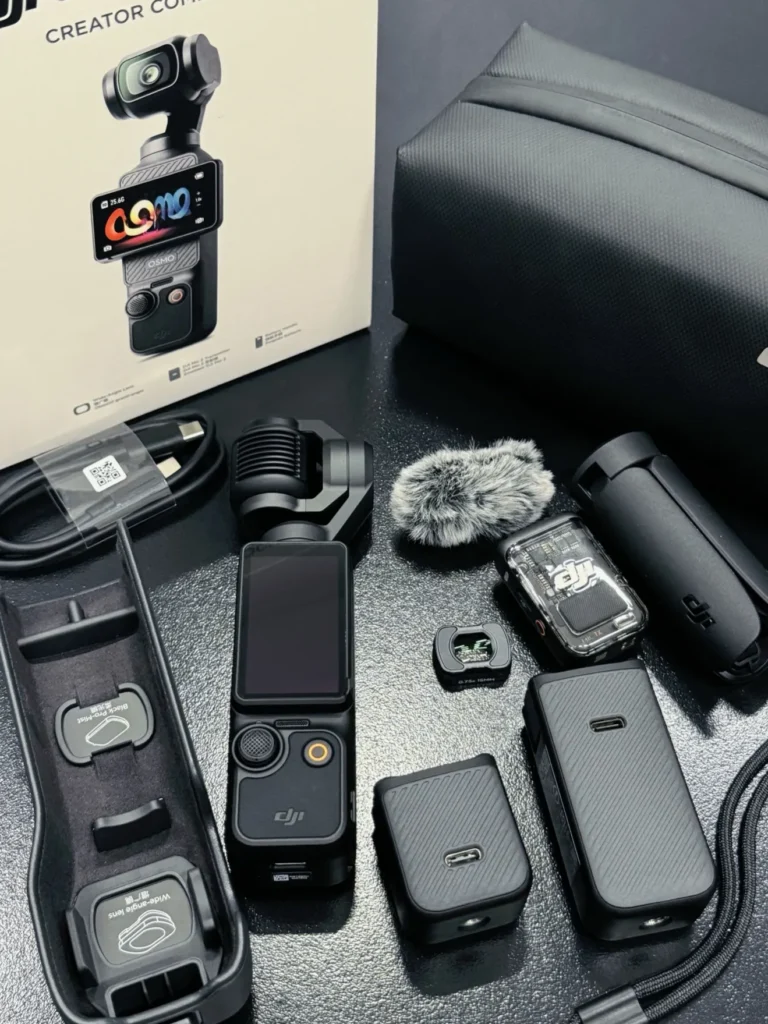
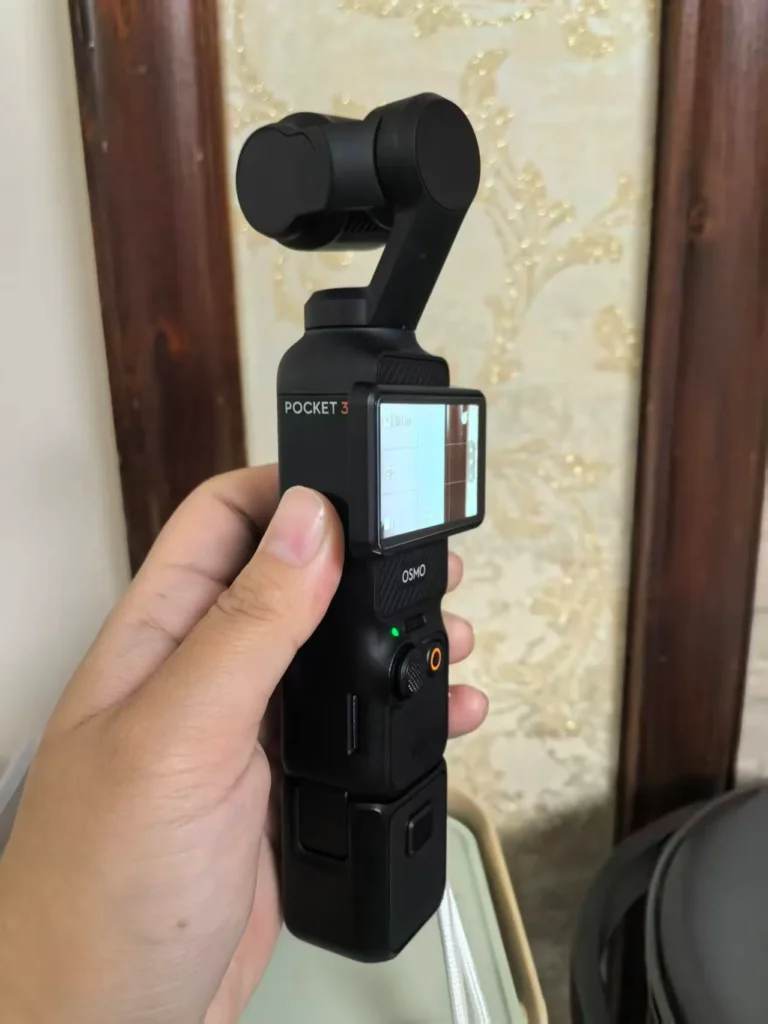
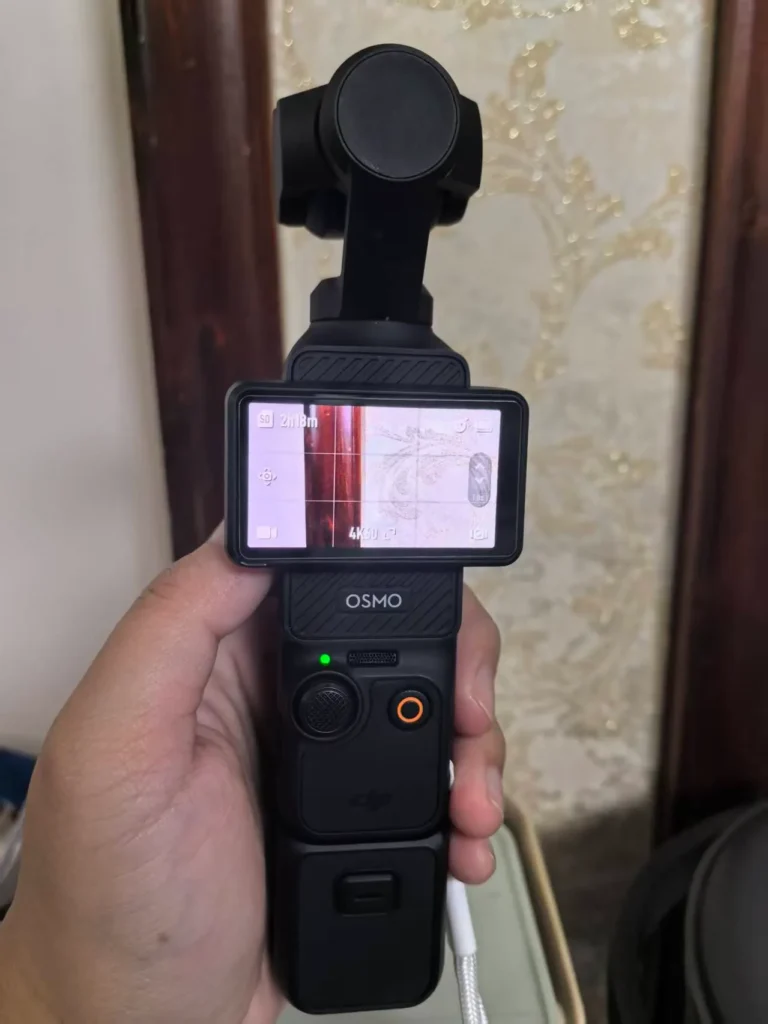

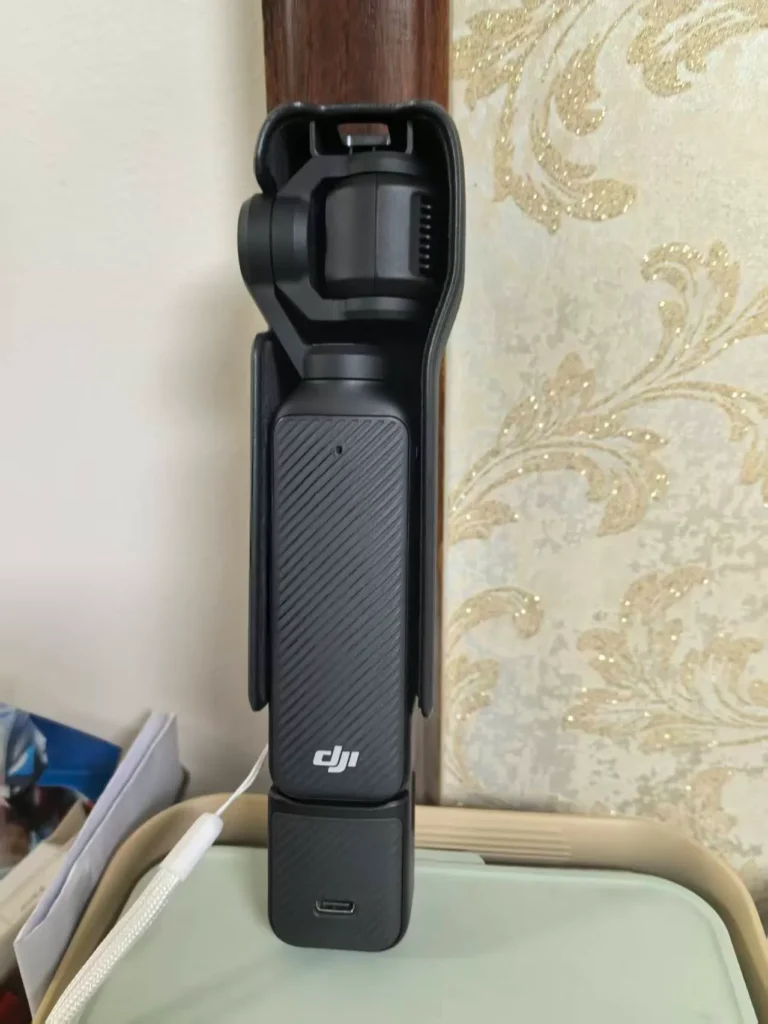
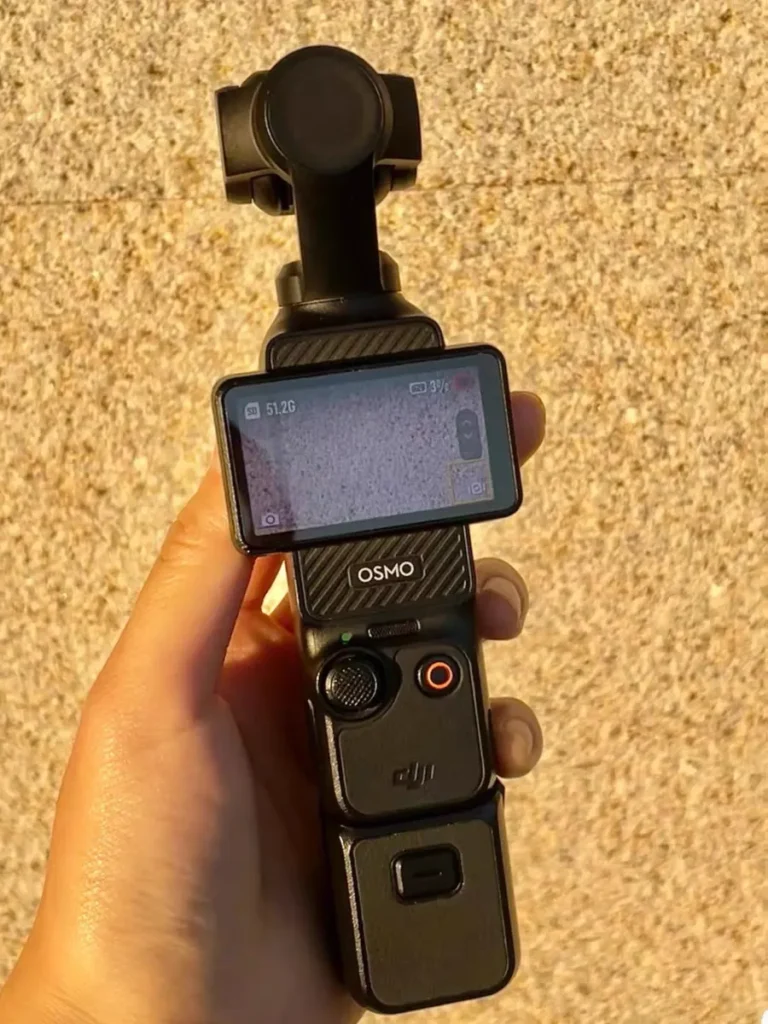
There is a huge gap between these two products in terms of three-proof performance.
The DJI Action 5 Pro is a rugged outdoor camera, ideal for outdoor work. Even without a camera, it’s waterproof up to 20 meters underwater. With the waterproof cover, it can reach 60 meters.
The DJI Action 5 Pro is also exceptionally dust and vibration-resistant. This means you can take it diving, film in torrential rain and strong winds, or even create in harsh environments without worrying about damage from water, dust, or bumps.
The DJI Action 5 Pro is also exceptionally dust and vibration-resistant. This means you can take it diving, shoot in torrential rain and strong winds, and even create in harsh environments without worrying about damage from water, dust, or bumps.
In contrast, the DJI Osmo Pocket 3 isn’t inherently waterproof and requires a dedicated waterproof housing for underwater operation. The DJI Osmo Pocket 3’s gimbal is also relatively fragile, requiring extra care in environments prone to bumps and bruises.
Furthermore, damage to the DJI Osmo Pocket 3’s gimbal can significantly impact your shooting experience.
Thus, it’s not recommended to carry the DJI Osmo Pocket 3 directly in your pocket. It’s best to store it in a dedicated protective case when not in use.
As cameras, or rather, creative tools, how do these two tools perform in terms of image quality?
Let’s first look at focal length.
The DJI Osmo Pocket 3 has an equivalent focal length of approximately 20mm, which is closer to human vision. The resulting images have a more immersive feel, capturing the scenery naturally. The 4K 60fps footage is crisp and smooth, with exceptionally realistic color reproduction. Whether capturing sunny landscapes or cozy indoor moments, details are perfectly captured.
Images captured by the DJI Osmo Pocket 3:
The DJI Action 5 Pro has an equivalent focal length of 14mm, which is typical for ultra-wide-angle action cameras. This means it can capture a wide range of footage. When shooting landscapes or large scenes, it captures the entire scene.
Due to their positioning and design, the DJI Action 5 Pro and DJI Osmo Pocket 3 don’t exhibit particularly noticeable blurring.
The DJI Osmo Pocket 3’s 20mm lens, combined with its aperture, creates only a slight separation between the subject and background when shooting portraits. The DJI Action 5 Pro’s design is more like a pan-focal range, capturing both distant and near objects with crystal-clear clarity and virtually no blurring.
In terms of video stabilization, the DJI Osmo Pocket 3’s micro-gimbal stabilization technology is highly effective, allowing me to shoot while walking with virtually no shakiness.
On my way home from getting out of work, I used the DJI Osmo Pocket 3 to shoot a short video while driving. This provided a good test of the DJI Osmo Pocket 3’s shooting performance in dark environments and under shaky conditions. The footage was quite clear, and the shaky-free performance was excellent, maintaining a stable image.
Shooting while walking or jogging was as steady as a gimbal, eliminating the dizzying shakiness of previous smartphone videos. ActiveTrack 3.0 is a boon for those who prefer a lazy camera. It eliminates the need to fumble with angles when vlogging; it precisely locks on the subject and automatically adjusts the composition based on their movements, allowing even beginners to achieve professional-looking footage.
The DJI Osmo Pocket 3 also offers a variety of one-touch movie modes, such as time-lapse and slow motion. The simple operation delivers stunning results, resulting in high-quality video editing and significantly reduced post-production effort.
The DJI Action 5 Pro uses electronic image stabilization and algorithm optimization. You can compare the footage captured by the DJI Action 5 Pro with that of the DJI Osmo Pocket 3 above.
Our friends used the DJI Action 5 Pro to film while riding a motorcycle, and we were very satisfied with the image quality. It supports 4K/120fps video recording, with clear and smooth footage and excellent color reproduction. Furthermore, its powerful image stabilization ensures stable footage even during motion, which you can see when watching the footage.
In addition, the DJI Action 5 Pro supports a variety of shooting modes, such as slow motion and time-lapse. We will continue to share more about different shooting modes.
In summary, the DJI Osmo Pocket 3 delivers excellent portraits, regardless of whether they’re taken in relatively dark or brightly lit environments. The DJI Action 5 Pro, on the other hand, struggles with clarity when shooting portraits in darker environments.
The official price of the DJI Action 5 Pro is $349, while the official price of the DJI Osmo Pocket 3 is $898.
Although the DJI Osmo Pocket 3 has been on sale for two years, it’s been constantly increasing in price, only returning to its original price in the last two months. This may also mean that the Pocket 4 is about to be released.
The DJI Action 5 Pro has a built-in magnetic mount, allowing it to attach to any hard surface, acting as a stand and unlocking new perspectives. I personally feel that the DJI Action 5 Pro is the best choice for first-person shooting.
The Pocket 3’s biggest advantage is its built-in gimbal, tilt, and various built-in camera functions. However, beginners still need to practice using the Pocket 3 when first starting.
The DJI Osmo Pocket 3 and the DJI Action 5 Pro are two portable cameras with different positioning. To make it easier for you to compare, we have made a comparison table:
| DJI Osmo Pocket 3 | DJI Action 5 Pro | |
| Picture Quality Performance | Equipped with a 1-inch large base sensor, it has excellent control of low light noise and natural color restoration, which is suitable for portrait, night scene, store exploration and other scenes. | The 1/1.3-inch sensor has a dynamic range of 13.5, and the ultra-wide Angle lens is good for big landscape and motion shots, but the detail performance is slightly inferior to the Pocket 3. |
| Shock Absorption Performance | The three-axis mechanical PTZ anti-shake is suitable for smooth camera movement and extremely stable for daily walking shooting. | Electronic stabilization (RockSteady 3.0), which provides better stabilization for extreme sports, supports 360° horizontal stabilization. |
| Portability and Durability | The body is small (6.3oz) and can be put in a pocket, but it is not waterproof and needs careful protection. | Battery life is about 1.5 hours; you need to carry a spare battery. Accessories are rich but expensive. |
| Operational Experience | The 2-inch rotating screen is intuitive to operate, and the intelligent following function is convenient for single shooting. | Suitable for outdoor sports, extreme sports, and underwater shooting, emphasizing protection and multi-scenario adaptability. |
| Battery life is about 1.5 hours, you need to carry a spare battery. Accessories are rich but expensive. | The front and rear dual screen design, physical keys + voice control, is suitable for fast operation during exercise. | The battery life is about 2 hours, fast charging support, and the accessories are compatible with each other, which is suitable for sports scenes. |
| Applicable Scene | Battery life is about 1.5 hours; you need to carry a spare battery. Accessories are rich but expensive. | Suitable for city life, Vlog creation, and travel recording, focusing on picture quality and portability. |
| Sum Up | The 1/1.3-inch sensor has a dynamic range of 13.5, and the ultra-wide-angle lens is good for big landscape and motion shots, but the detail performance is slightly inferior to the Pocket 3. | |
I believe that after reading this, everyone has been able to make their own choices based on their daily work or life needs. If you need to purchase accessories for these two products, you can click here and contact us to purchase.
